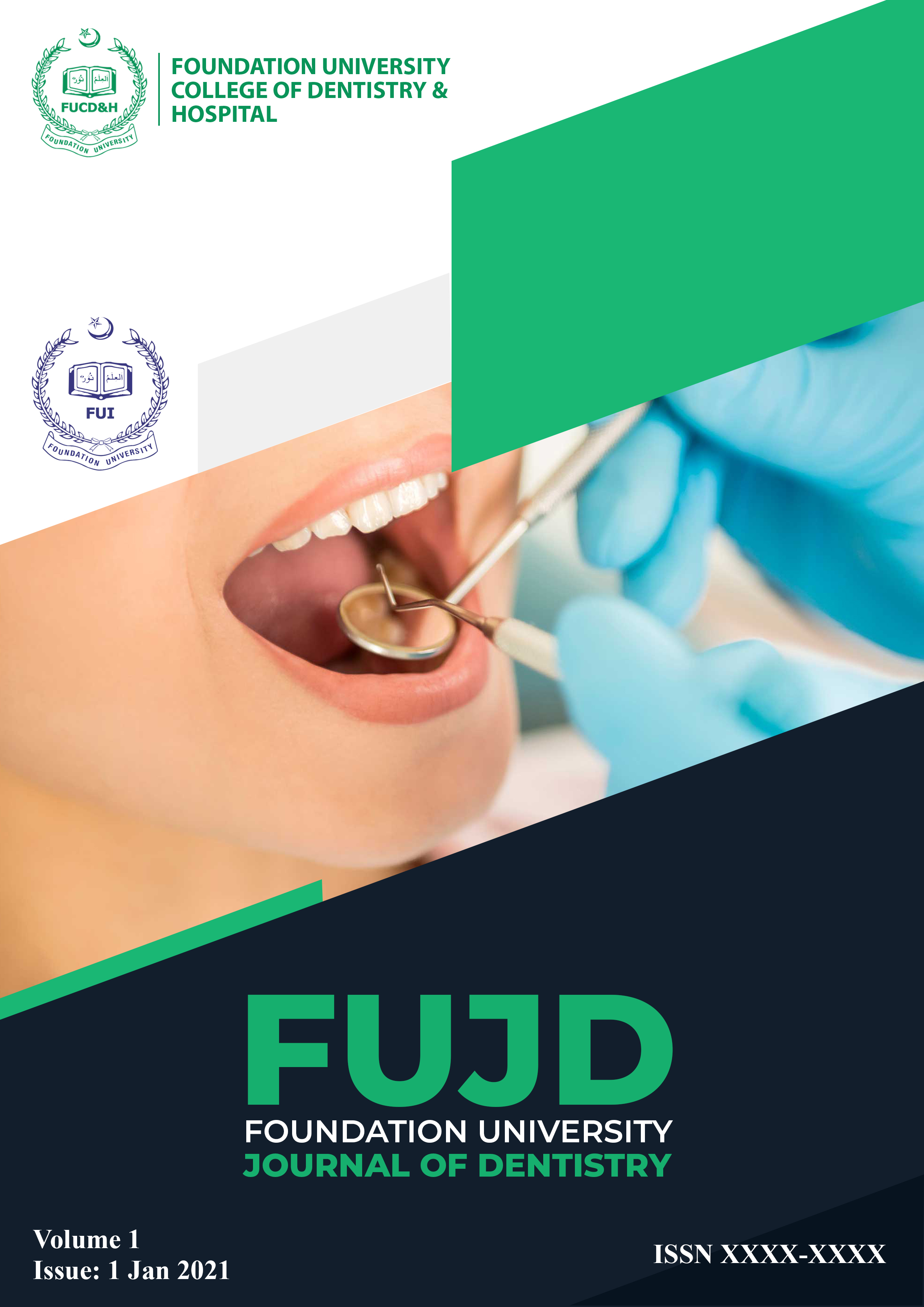Analysis of Type of Proximal Contact Points of Porcelain Fused to Metal Crowns and Caries in Adjacent Teeth
Abstract
Objective: The objective of this article is to investigate the association between the type of mesial and distal proximal contact points of Porcelain Fused to Metal crowns and the occurrence of caries in adjacent teeth.
Materials and Methods: From September 2019 to February 2020, the cross-sectional study was carried out at the Department of Prosthodontics, Armed Forces Institute of Dentistry, on hundred post-treatment patients with Fixed Dental Prostheses (FDPs). The patients were recalled for follow-up after 3 months regarding the clinical evaluation of mesial and distal proximal contact points using dental floss and were graded as acceptable, open and tight. Bitewing and periapical radiographs were obtained by the operator to assess caries at the cementation and follow-up appointments.
Results: The frequency of contacts observed on the mesial aspect was 70% acceptable, 12% open and 18% tight. The frequency of contacts observed on the distal aspect was 40% acceptable, 48% open and 12% tight. Caries were present in 36% of the mesial aspect and 34% on the distal surface of the adjacent tooth. A significant difference was observed between caries presence and contact type observed for both mesial and distal aspects (p<0.001).
Conclusion: The study highlights that open and tight contact points are linked to an increased risk of caries development in teeth adjacent to porcelain fused to metal crowns.

This work is licensed under a Creative Commons Attribution-NonCommercial 4.0 International License.
All copyrights © are reserved with the author(s) under (CC BY-NC 4.0). Foundation University Journal of Dentistry (FUJD) is an open-access peer-reviewed journal that allows free access to its published articles, in addition, to copying and use for research and academic purposes; provided the article is correctly cited. FUJD does not allow commercial use of any article published in FUJD. All articles published represent the view of the authors and do not reflect the official policy of FUJD.



